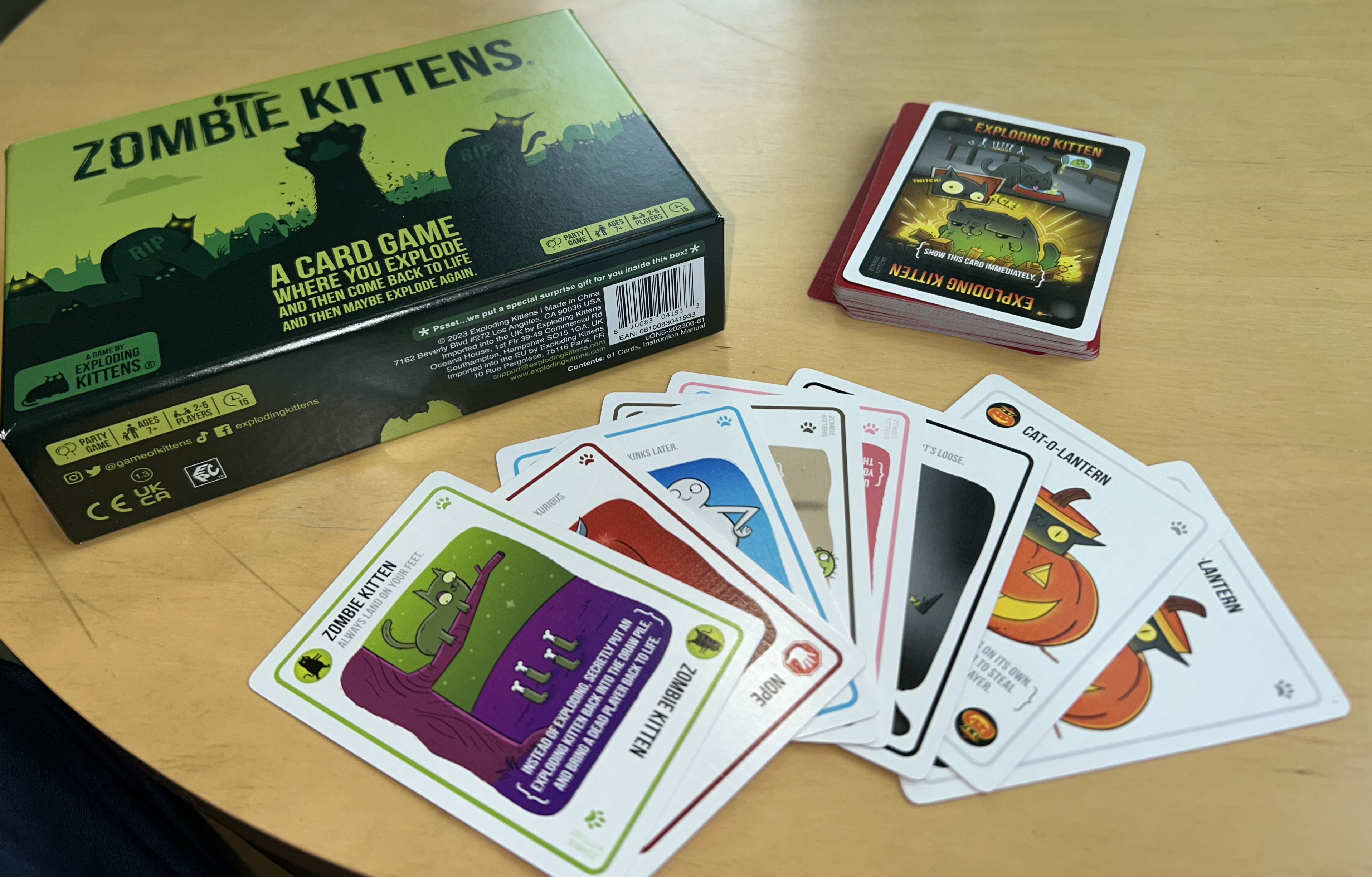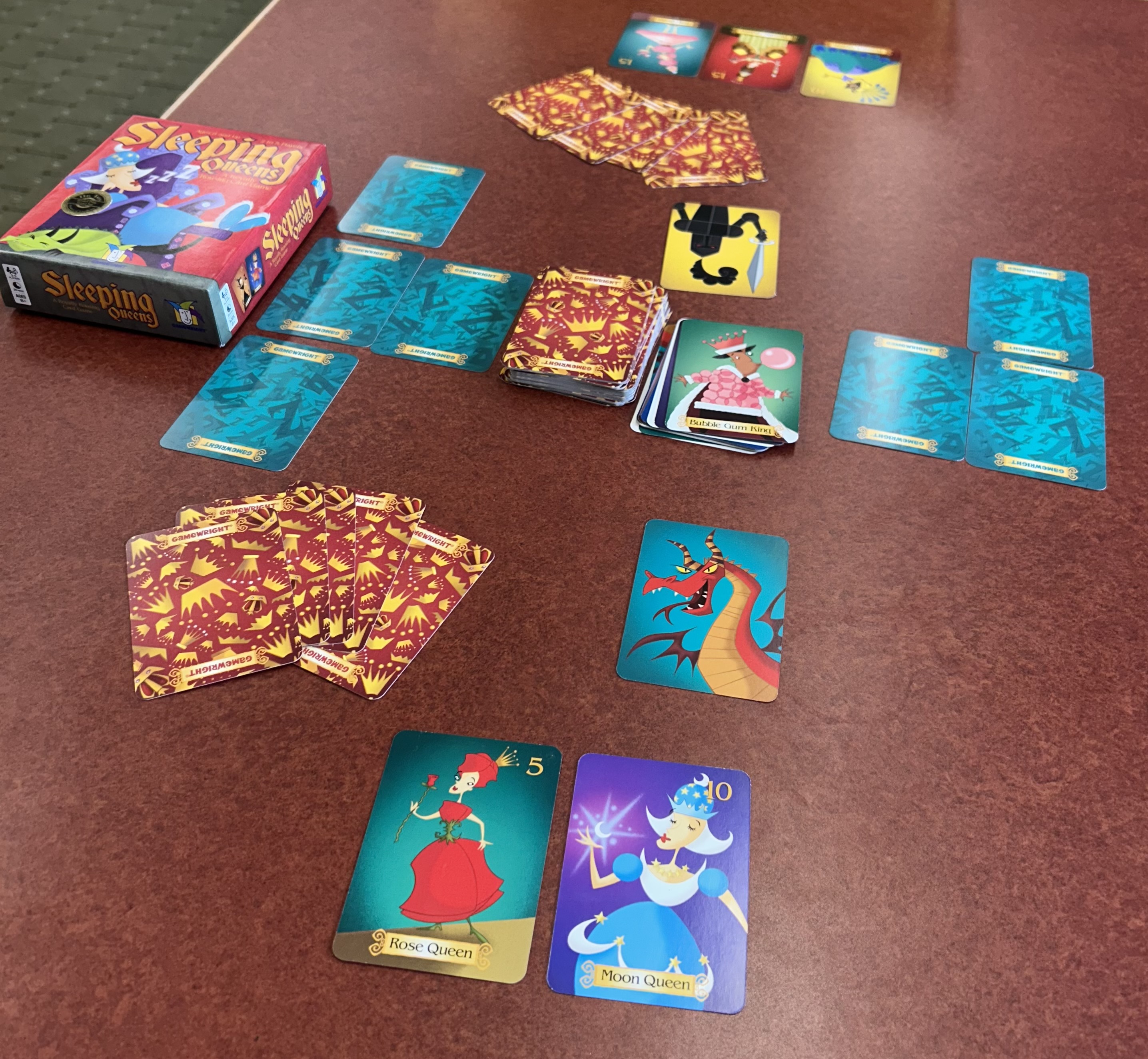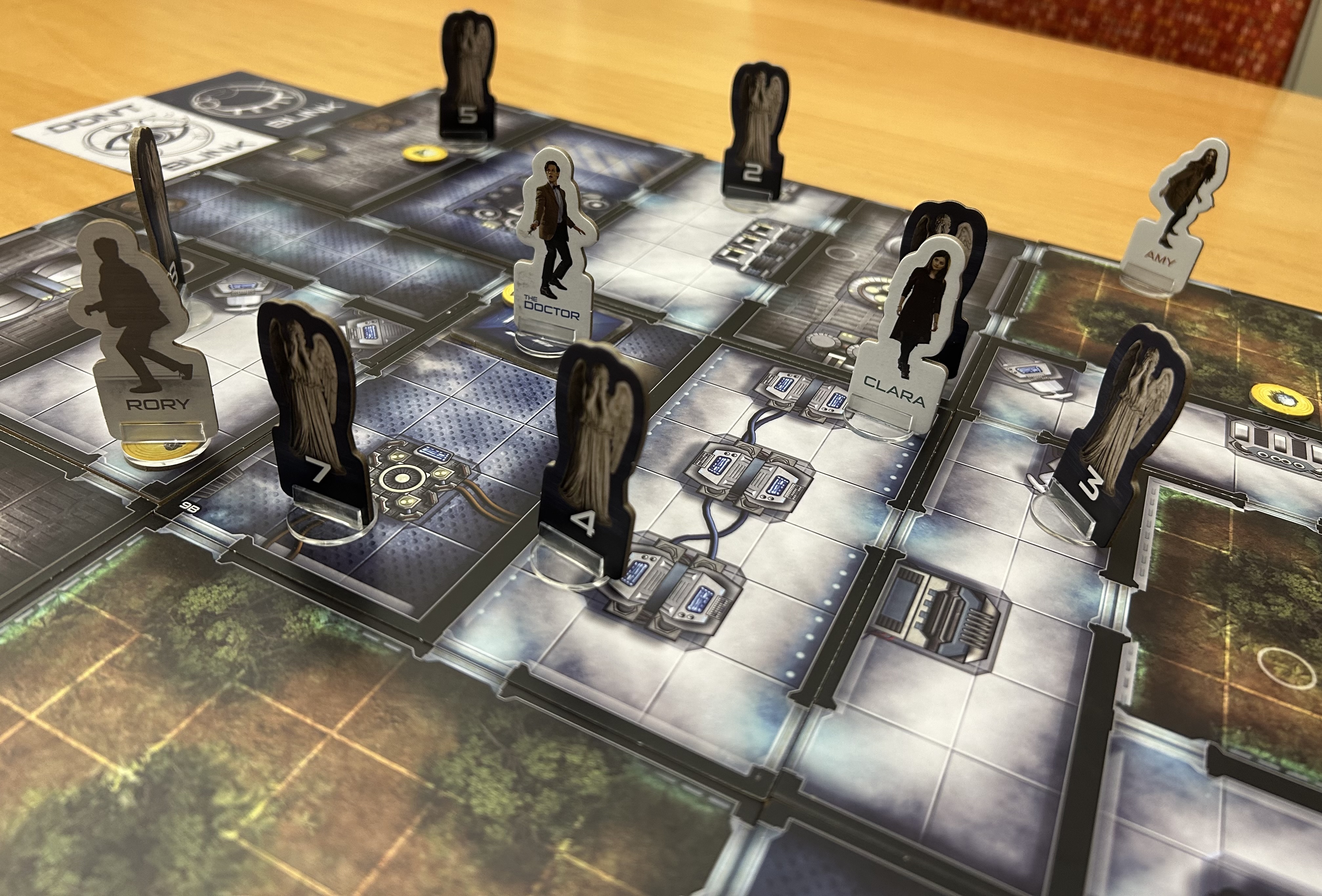Posted Jun 27, 2025
Hello Shorewood community! I’m your resident board gamer Michael Smith, discussing some more board games in anticipation of our upcoming dates of Shorewood Shuffles, our board game nights hosted at the library on select Thursdays. Today I’m covering Zombie Kittens, Sleeping Queens, and Dr. Who: Don’t Blink, all of which will be available and ready to play at our next Shorewood Shuffles event.
Zombie Kittens

I always love a game of Exploding Kittens because of its approachable ruleset and easy to grasp mechanics. The goal of Exploding Kittens is to simply, not explode. Players share a deck and take turns playing and drawing cards, all to be the last person alive by avoiding drawing an exploding kitten from the deck. Sometimes a player gets unlucky and ends up drawing an exploding kitten early, forcing them to sit the rest of the game out. This is where Exploding Kittens’ (the company) alternate version of Exploding Kittens (the game) called Zombie Kittens comes in. The gameplay remains the same, allowing players to peek and modify the deck to prevent self-immolation while at the same time stealing helpful cards from your other fluffy bomb-defusal experts or using the very fun ‘NOPE!’ card to prevent players from taking action. If you wanted some variance, there are some different cards used in Zombie Kittens if you were worried about playing the exact game. Another key aspect is the ‘Zombie Kitten’ card. In the original game each player is given one ‘Defuse’ card to prevent an early demise at the hands of a fuse-lit furball. Instead of the ‘Defuse’ card you have a ‘Zombie Kitten’ which functions the same as a defuse, allowing you to stave off death, but comes with the bonus of bringing a dead player back to life. This allows the idea of intentionally dying to instead hope another player will bring you back to life for another chance to win the game. After a cat explosion is avoided, the player who cancels the blast gets the fun task of placing their exploding kitten card (and the exploding kitten of the revived player) anywhere in the deck, hidden from their competition. Zombie Kittens is an enjoyable remix of a board game staple, sure to bring a new level of strategy and humor to this game of clawed catastrophe.
Sleeping Queens

The backstory of Sleeping Queens is that the game was invented by a 6-year-old during a fitful night of unrest who then went on to devise a family-friendly card game of magic, knights and the jumble of countesses in nightcaps. Sleeping Queens is a card game in which 2-5 players take turns playing cards to draw the right cards to awaken enough sleeping queens to win the game. To rouse royalty, a player must first draw power cards shuffled in the main deck. The best way to do this is to play number cards in three different orders: a single number card, a pair of the same number, or three cards which make an addition sequence (ex a 2 card, a 3 card, and a 5 card). Players draw cards equal to the number of cards they play, so using multiple cards on their turn is the best way to gain an advantage. The main power card is the king, which allows a player to flip over a sleeping queen and add it to their scoring pile. There is also a sleeping potion, which allows you to send a queen back to sleep or the knight which allows a player to steal a queen, which are countered by the magic wand and dragon power cards respectively. The art of the game is also worth discussing, as each picture of the queens and knights is cartoonishly fantastical, reminiscent of some of the fairytale picture books often found in the children’s area of the library. Sleeping Queens reminds me a lot of classical ‘poker deck card games’ such as Spades, Spoons and Go-Fish, and is a very charming game of both luck and skill easily teachable to first time board game players and a complex enough ruleset that more experienced players can return to at any time.
Dr. Who: Don’t Blink

Dr. Who: Don’t Blink is a board game inspired by the episode “Blink” from “Dr. Who” series Three Episode 10. The game follows the episode’s exploration of horror and survival and pits the players in a Doctor vs Angels scenario in which team Doctor (which can include up to four players, each controlling one or more good guys) must assemble parts of the TARDIS scattered around the map before team Angels (all controlled by one player, four angels in one turn) can capture the doctors and his companions. The game is intentionally set up to give the weeping angels the upper hand. There are eight angels versus the four doctors and companions, the good guys can only move six spaces, while angels can move nine, and so on. However asynchronous the power between team Doctor and team Angels is, the Doctor and companions still have some tricks up their sleeves to ensure survival. For team Doctors there is the line-of-sight mechanic and the blink deck. At the end of the hero’s turn a player places a ‘Blink’ or ‘Don’t Blink’ card down for each hero to represent what happens when an angel enters that hero’s line of sight. If the card revealed says ‘Don’t Blink’ then the angel is stuck in place and can’t move within a hero’s line of sight. If ‘Blink’ is revealed, then the angel has free reign and can even move up to capture a hero. The doctor and companions also have one special power card to use in dire situations, as after the cards are used, team Angles is given a card that also contains a special power to be used for later. With the additional rule that ‘Don’t Blink’ cards are discarded upon use, team Doctor are given limited resources and must decide when and where to take risks. Dr. Who: Don’t Blink is a fun time and really pushes a player to think ahead and decide how to effectively ensure survival while time is ticking down.
written by Michael Smith, Library Clerk
Share This:
